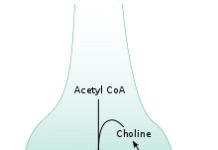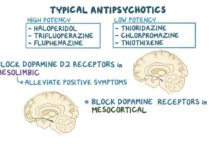Your gallbladder is one of those organs that you probably don't think too much about — unless something goes wrong.
Its main function is to store bile, which helps the body break down and digest the fats that you eat. It doesn’t produce the bile — the liver does that and sends it into your small intestine via the common bile duct during meals. As the small intestine does its job, most bile travels to the gallbladder, where it is stored until needed again. Then, when you eat fatty foods, your gallbladder releases the bile into the small intestine, where it’s mixed with partially digested food. (1)
Gallbladder problems are usually due to a blockage in your bile ducts, the tubes that let bile travel between your liver, gallbladder, and small intestine. The most common source of blockage is gallstones (cholelithiasis), which develop when substances in bile harden. (2)
Signs and Symptoms of Gallbladder Problems
If you have gallstones or another problem with your gallbladder, you may develop abdominal pain that can range from mild to excruciating. These attacks can last from 30 minutes to several hours. (3)
The gallbladder is located in the right upper area of your abdomen. "If there are any problems, typically the person complains of pain in that location, right below the ribs," explains Tomasz Rogula, MD, PhD, the director of the gastrointestinal metabolic surgery center at University Hospitals Geauga Medical Center in Chardon, Ohio.
If a gallstone completely blocks the flow of bile to the gallbladder or small intestine, you may experience the following symptoms, in addition to pain:
- Nausea or loss of appetite
- Fatigue
- Weight loss
- Jaundice (yellowing of the skin and eyes)
- Fever and chills
- Itching
- Night sweats
- Dark urine
- Greasy or light-colored stools (4)
Gallstones may never cause any pain at all, and may be discovered by chance on an imaging scan performed for unrelated reasons. In that case, no further treatment is necessary. (3)
While gallstones are the most frequent cause of gallbladder symptoms, it’s possible for your bile ducts to become blocked or narrowed due to rare causes, such as gallbladder cancer. (2)
Gallbladder cancer usually doesn’t cause any symptoms until its later stages. Even then, the symptoms overlap with those of other gallbladder problems, so it can be hard to identify. (5)
There can also be noncancerous growths that form on the lining of the gallbladder, known as polyps (only about 5 percent of them are cancerous). These polyps may not cause any symptoms, or they may cause the following:
- Nausea
- Vomiting
- Periodic pain in the upper-right abdomen (6)
Learn More About Symptoms of a Gallbladder Problem
Causes and Risk Factors of Gallbladder Problems
It’s often unclear exactly why gallstones form, but there are a number of factors that increase your risk of developing them, including the following:
- Being a woman
- Older age
- Obesity
- High cholesterol
- Taking medications that contain estrogen
- Losing weight quickly
- Diabetes
- Pregnancy
Risk factors for gallbladder cancer — an uncommon cause of bile duct blockage — include the following:
- Being a woman
- Older age
- History of gallstones
- History of other gallbladder problems, such as polyps or infection (5)
The main known risk factor for gallbladder polyps is a family history of the condition. Gallbladder polyps aren’t more common in particular genders, age ranges, body weights, or with a history of other health conditions. (6)
One ongoing area of research is the role of the gallbladder microbiome — the bacteria that live in and around the organ — in gallstones and other gallbladder problems. One study found that the bacteria Helicobacter and Salmonella may contribute to gallstone formation. (7)
How Are Gallbladder Problems Diagnosed?
To diagnose a gallbladder problem, such as gallstones, your doctor will first ask about your symptoms and perform a physical examination to determine what area of your abdomen is tender or painful. (3)
If your doctor suspects gallstones, you may undergo one or more of the following tests:
Blood tests Your doctor may look for elevated bilirubin, a waste product in blood that can signal a blocked bile duct. Tests may also look for abnormal pancreatic or liver enzyme levels, or signs of infection.
Abdominal ultrasound This noninvasive test uses sound waves to view your gallbladder and surrounding areas, including any gallstones that may be present.
Abdominal CT scan This noninvasive test uses radiation to create images of your gallbladder and bile ducts.
If a more detailed look at your gallbladder and bile ducts is needed, your doctor may schedule the following procedure:
Endoscopic retrograde cholangiopancreatography In an ERCP procedure, you are sedated and an endoscope (a long, thin tube) containing a tiny camera is passed down your throat into your bile ducts. Contrast dye and X-ray images are also typically used to view your gallbladder and surrounding structures in detail. (4)
Diagnosing Gallbladder Cancer
Gallbladder cancer is rare, but when it does occur, it’s usually not discovered until it has spread beyond the gallbladder.
Your doctor will diagnose gallbladder cancer on the basis of blood tests, imaging tests, a physical exam, and your history of symptoms.
Once gallbladder cancer is confirmed or suspected, more tests will be needed to determine the extent (stage) of your cancer. These may include:
- Further imaging tests
- ERCP or other endoscopic procedures
- Exploratory laparoscopic surgery (using a small incision and camera) (5)
Diagnosing Gallbladder Polyps
Gallbladder polyps are often discovered only when your doctor is looking at your gallbladder and bile ducts for another condition. If your polyps are causing symptoms, your doctor may order an abdominal ultrasound to look at the area.
If you have polyps that are less than half an inch wide, your doctor may decide that no further exploration is needed, since these are unlikely to be cancerous. (6)
Prognosis of Gallbladder Problems
Some gallbladder problems may cause only minor, occasional discomfort, while others may lead to serious and even life-threatening health problems.
Your doctor will determine the type and severity of your gallbladder problem and come up with a treatment strategy. Many gallbladder problems improve or are even completely resolved with treatment. (2,3)
Learn More About How Gallbladder Problems Are Diagnosed
Treatment and Medication Options for Gallbladder Problems
If you have a gallstone that is blocking your common bile duct (the one that runs from the gallbladder to the small intestine), your doctor may recommend endoscopic retrograde cholangiopancreatography (ERCP). This procedure may be used both to diagnose your condition and to treat it immediately.
During ERCP, an endoscope (a long, thin tube) containing a tiny camera is passed down your throat and into your bile ducts. Your doctor may then use additional tubes or tiny tools to remove gallstones from the area.
If your doctor discovers during ERCP that there are gallstones in the gallbladder itself, surgery may be necessary. (3)
If you have gallbladder cancer, in addition to having your gallbladder removed, your doctor may recommend additional treatments such as chemotherapy or radiation therapy. (5)
Doctors are also learning more about how and when to treat gallstones during pregnancy. Recent research has shown that while most pregnant women with gallstones don’t undergo gallbladder surgery during pregnancy, having the operation is associated with an almost 60 percent lower risk of hospital readmission (and gallstones during pregnancy increase the risks of preterm birth and health problems in both mothers and newborn babies). (8)
Gallbladder Surgery
The most common surgical procedure related to the gallbladder is removing it completely. Known as cholecystectomy, gallbladder removal is most often performed to resolve pain caused by gallstones.
There are two methods of gallbladder removal. Laparoscopy, which is almost always the preferred method, involves making several small incisions through which surgical tools and a tiny video camera are inserted.
Open surgery, using a large incision, may be required if your surgeon discovers during a laparoscopic procedure that your gallbladder is infected or has hardened. This happens in 5 to 10 percent of laparoscopic gallbladder surgeries. (9) Open surgery may also be the first choice if your gallbladder disease is severe. (4)
Learn More About Gallbladder Surgery
Medication Options
Medications may be used to help reverse gallstones, but usually only when surgery isn’t an option. A drug called ursodiol may be taken to slowly dissolve the cholesterol in gallstones. But this treatment can take months, and gallstones may return once the drug is no longer being taken. (3)
Alternative and Complementary Therapies
Dietary changes are often recommended following gallbladder surgery.
When your gallbladder is removed, your body is no longer able to store bile there. As a result, your liver must adapt to releasing bile directly into your small intestine to aid in digestion. Before your body adapts to this new reality, it can be more difficult to digest certain fatty and high-fiber foods.
It’s best to reintroduce those kinds of harder-to-digest foods slowly after your surgery, rather than jump back into your normal diet. It may also be helpful to eat smaller meals more frequently, since this reduces your small intestine’s demand for bile at any given time. (10)
Learn More About Your Diet After Gallbladder Removal
Prevention of Gallbladder Problems
While there’s no proven way to prevent gallstones, there are some steps that may be helpful, including:
- Eating three balanced meals each day
- Maintaining a healthy weight
- Getting regular exercise
- Drinking alcohol in moderation (9,11)
It’s also important to manage any health conditions that may raise your risk of developing gallstones, including diabetes and high cholesterol.
Complications of Gallbladder Problems
Gallstones can lead to a number of different complications in the gallbladder and beyond, including the following:
- Cholecystitis (inflammation of the gallbladder), caused by a blockage in bile circulation
- Blockage of the common bile duct
- Cholangitis, when infected material is trapped in the common bile duct
- Pancreatitis, due to gallstones blocking pancreatic enzymes from traveling to the small intestine (3,12)
Gallbladder inflammation or a bile duct blockage can be quite painful and cause fever, chills, or jaundice. Seek urgent medical attention if you develop these symptoms. (3)
Learn More About Cholecystitis
Complications of Gallbladder Surgery
Gallbladder removal is a common procedure that rarely results in severe complications. The surgery often causes a disruption in your digestive system for a period of time, but this is an expected side effect of the procedure and shouldn’t be alarming. (10)
You may also experience loose stools on occasion after gallbladder removal, caused by bile entering your small intestine when no food is present. This may be treated with a bile acid-binding medication. (9)
In some cases, though, more severe complications develop, such as bile leaking into the abdominal cavity or an injury to a bile duct, your liver, or your small intestine. These can occur on top of general surgery complications like infection, bleeding, blood clots, and pneumonia.
Contact your doctor if you experience any signs of a complication that may need treatment. (13)
Learn More About Gallbladder Surgery Complications
Native and Hispanic Americans and Gallbladder Problems
Certain ethnic groups have a higher risk for gallbladder problems than others. In the United States, the risk for gallbladder cancer is highest for Native Americans than any other group. (14) Native Americans are also at a higher rate for gallbladder disease, as are Hispanic Americans, likely because of a combination of genetics, diet, and obesity rates. (15)
Resources We Love
Organizations for Essential Gallbladder Disease Information
American College of Gastroenterology
If your doctor suspects gallbladder disease, this is a good resource to start with. The web page is divided into questions about different aspects of the condition.
American Pediatric Surgical Association
This site is geared toward parents of children with gallbladder disease, but may be useful for people of any age or their caregivers. It offers a thorough and easy-to-understand explanation of how the gallbladder works and what can go wrong, diagnostic tests, treatment options, and recovery.
Society of American Gastrointestinal and Endoscopic Surgeons (SAGES)
Surgery to remove the gallbladder is most often done laparoscopically, using small incisions and guided by a tiny camera. This resource explains the operation and other forms of surgery to remove a gallbladder.
Online Resource for Finding a Surgeon Who Specializes in Minimally Invasive Gallbladder Surgery
SAGES
Laparoscopic surgery to remove a gallbladder is commonly performed, but if your situation is not an emergency, this site can help you look for a surgeon near you with specific expertise in this procedure. Be sure to ask about their experience with open abdominal surgery in case it becomes necessary.
Online Resource for What to Eat After Gallbladder Surgery
Cleveland Clinic
This resource has specific suggestions for what to eat after gallbladder surgery as well as what foods to avoid.
Additional reporting by Diana Rodriguez.
Editorial Sources and Fact-Checking
- How Does the Gallbladder Work? National Center for Biotechnology Information. September 6, 2018.
- Gallbladder Diseases. MedlinePlus. June 17, 2020.
- Biliary Tract Disorders, Gallbladder Disorders, and Gallstone Pancreatitis. American College of Gastroenterology. July 2013.
- Gallstones and Bile Duct Stones. Virginia Mason. August 2020.
- Gallbladder Cancer. Mayo Clinic. March 8, 2018.
- Gallbladder Polyps. Mercy Health. August 2020.
- Wang Y, Qi M, et al. Role of the Biliary Microbiome in Gallstone Disease. Expert Review of Gastroenterology & Hepatology. May 3, 2018.
- Ibiebele I, Schnitzler M, et al. Outcomes of Gallstone Disease During Pregnancy: A Population‐Based Data Linkage Study. Paediatric and Perinatal Epidemiology. September 7, 2017.
- What to Do About Gallstones. Harvard Medical School. March 2011.
- What to Eat After You Have Your Gallbladder Removed. Cleveland Clinic. September 18, 2019.
- Gallstones. National Institute of Diabetes and Digestive and Kidney Diseases. November 2017.
- Gallstones. Mayo Clinic. August 8, 2019.
- Cholecystectomy (Gallbladder Removal). Mayo Clinic. August 9, 2019.
- Gallbladder Cancer Incidence and Death Rates. Centers for Disease Control and Prevention. September 22, 2020.
- Figueiredo J, Haiman C, et al. Sex and Ethnic/Racial-Specific Risk Factors for Gallbladder isease. BMC Gastroenterology. December 8, 2017.













































